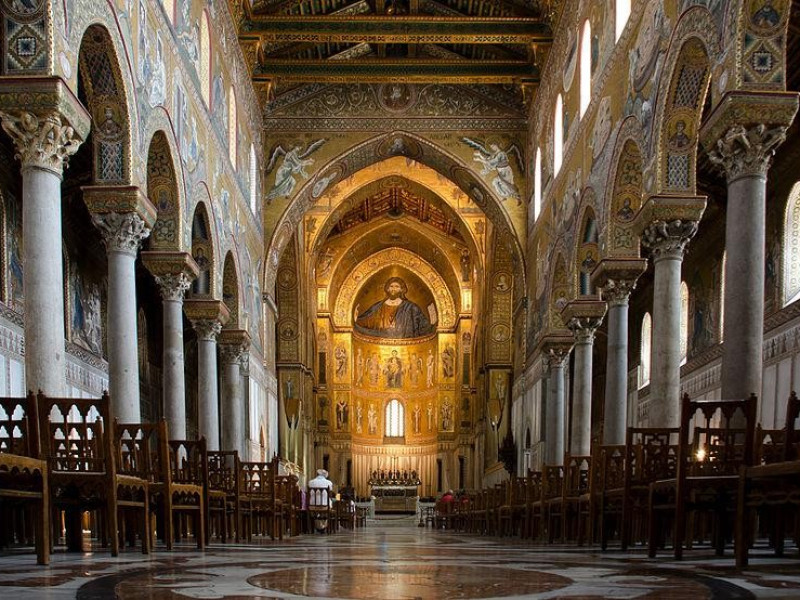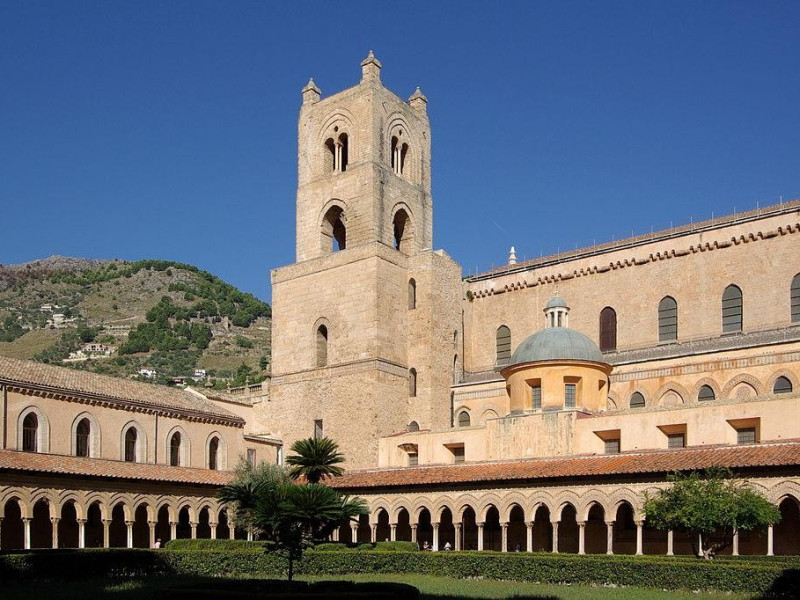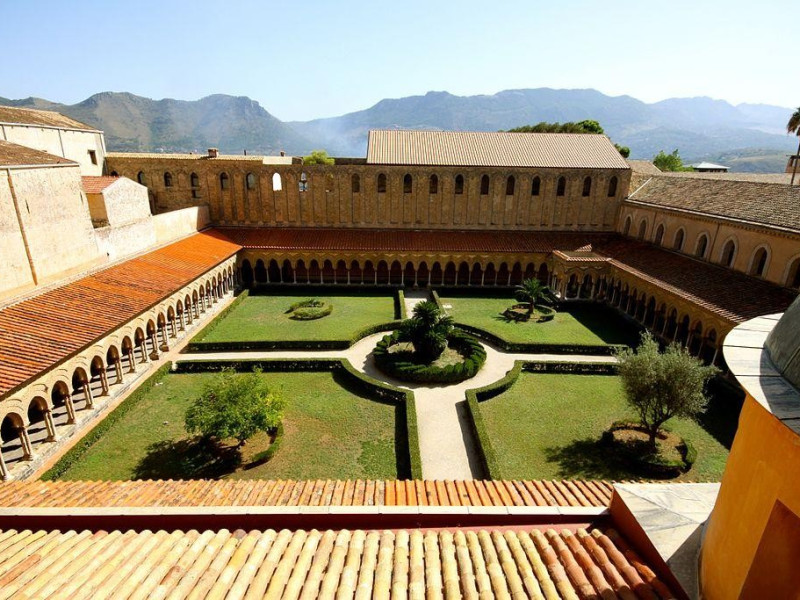Cattedrale di Santa Maria Nuova (Duomo di Monreale - Sito UNESCO)
Built starting in 1174 by William II d'Altavilla. Cathedral is famous for rich Byzantine mosaics that decorate the interior. Since July 2015 it is part of the UNESCO "World Heritage" as part of Arab-Norman path Palermo Cefalu-Monreale. In the sixteenth century, on designed by Giovanni Domenico and Fazio Gagini was built the porch along left side, while the main facade was added in the eighteenth century. In 1811 a fire destroyed the ceiling, which was rebuilt between 1816 and 1837, when they were made new choir stalls in Gothic Revival style. The facade is sandwiched between two bell towers. The entrance is preceded by an eighteenth century Baroque porch, which opens to the outside with three arches resting on Tuscan columns; below, bronze doors by Bonanno Pisano, dating back to 1185-1186. Along left side, the oldest Renaissance porch, covered by a cross vault and open to the outside with eleven round arches resting on Corinthian columns. The exterior preserves Norman imprint in the apse. Vast interior has Latin cross. The ceilings are beamed discoveries, decorated with stalactites of Arabic type. Mosaic floor, which was completed in the sixteenth century with discs of porphyry and granite. Baroque high altar is a fine work of 1711 by Luigi Valadier. The nave is covered with mosaics of Byzantine school with a gold background executed between the twelfth and thirteenth centuries, depicting cyclical stories of Old and New Testament; in the apse, colossal figure of Pantocrator Christ. On right side are the porphyry sarcophagi of William I and II. The chapels of the Crucifix and St. Benedict are two outstanding examples of Sicilian Baroque. Cathedral is flanked by ancient Cloister of Benedectine Convent built in the twelfth century, Romanesque building.










